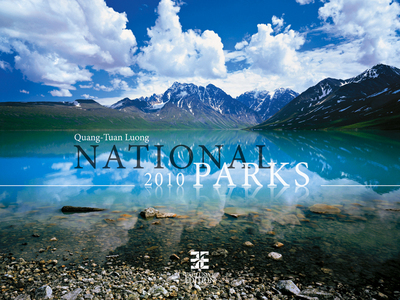Musings on color: the calendar
3 Comments
Last year, I licensed 12 images to a calendar company located in Europe for a 2010 National Parks calendar. As part of the deal, I received a limited number of copies (some are on sale here).
Upon opening the package, I was pleasantly surprised by the high quality of the production. The images are reproduced 23 inch wide on a very glossy paper. However the images didn’t look as I remember them.

At first, I assumed poor color management, but then a comparison with my digital files showed that the colors had been systematically altered, with color warming and saturation increases, in particular in the yellows and oranges. “Calendar art” came to mind.
Because this is a high-end calendar company (judging by the production values), publishing annually dozens of calendars, I had to assume that they knew what they were doing. Yet I was wondering why they had to make those changes to the files I provided to them.
From a photographer’s point of view, there is one reason for increasing drama: emotions influence our reactions and remembrances of a scene. We are sometimes disappointed when an image doesn’t match the excitement that we felt at the scene, or fails to create that excitement in the viewer of our photographs. Enhancing the colors in an image can be a means to remedy the discrepancy between our emotional response, and a literal interpretation. When our experience at the scene was particularly memorable, it is tempting to summon vivid colors to match vivid memories and create impact. There are also individual factors. For instance, if we were hiking, the exhilaration of effort can also bring us to a state where our perception is more sensitive, and therefore the colors look more vivid to us.
In the case of this calendar, the alterations were made by someone who was not present at the scene. Absent the artistic motivation previously described, the most likely reason for enhancing the colors is they thought the calendar would sell better.
It is well-known in the industry that more dramatic images edge others in the marketplace. The same can be observed on photo-sharing sites and contests. Velvia quickly displaced other films used in nature photography. In a world filled with more and more distractions, dramatic color catches your eye, particularly in small images, where there isn’t that much content to hold your attention. Since color photography has been arguably invented to serve commerce, it is not a surprise that “more” color will sell better. Selling is a matter of catching one’s attention fast.
The risk is that there is an increasing “arms race” towards more saturation – and further from reality. This has been in great part aided by the ease of use of just a slider in software. Vibrant images are now expected in nature photography, creating a standard that is somehow arbitrary. If everybody else is offering images with vivid color, and you do not do the same, your images may be perceived as too flat compared to the mainstream.
Since this blog does not let me format the images side by side, please see the comparison here.
Update: After the initial day, the first 100 votes favored the “enhanced” versions by a margin of 56 to 44. This puts me in the minority, but I stand by my original versions. I favor clarity and truthfulness over impact. I try to create images that endure a sustained viewing, rather than attract the eye. I’d like to believe that one of the reasons why the vivid images were favored by the majority is that both series were presented as small web images, whereas I prepare my images for prints. I have found that as the print size increases, and the image is given more consideration, the “wow” factor caused by dramatic color wear out.


You can also add in the context that the photo industry is participating at the source at this reality subtle subversion: the jpg that are provided by digital camera are often skewed toward more saturation. For example, if you take a semi-pro canon camera, the jpg format will be more warm that the RAW format. Kodak has been doing it forever in their argentic times.
Woop, what a yellow boost! As Hugues puts it, there are many choices incorporated in the final picture, not just the editor’s.
What about the final outcome?
My “preference” depends on cases across the 12-images list. Basically, the yellow/orange tones present these mineral and vegetal sets as vibrant, moving beings – figures illustrating a Gaia hypothesis.
So, it’s art (as opposed to nature) – art by the editor, not just the photographer and his material.
Who should be the judge?…
As far as I know, according to the French understanding of “droit moral”, the editor should not be allowed to modify the original picture without some explicit agreement of the author. (I ignore whether it is actually applied implemented this way).
“Autre moralité” : I should open bright eyes while wandering. Not rely too much on calendars 😉
I like what you have to say